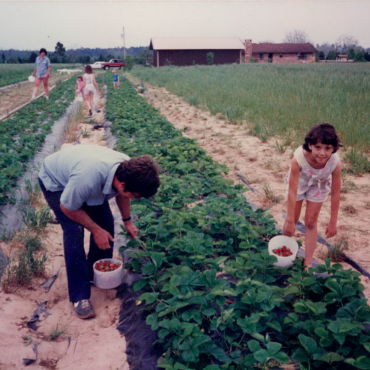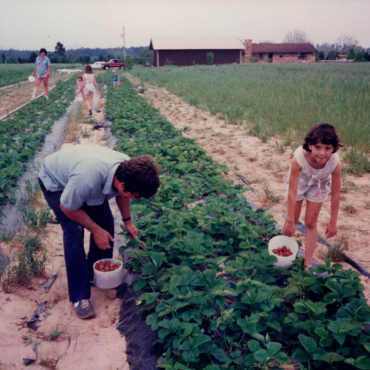Are you seeing potential signs of fungus in your lawn? Fungus spread through spores and typically thrive in environments with poor airflow, excessive moisture, and low light conditions. This is why after a rainstorm, where clouds are prevalent and grounds are wet, you may notice signs of fungus. According to Graham Simmons, Director of Turf Grass Operations for Woerner Farms, ”Rainy and cloudy weather are prime conditions for fungus.” Below is a list and photo examples of common types of fungus to watch out for in your lawn.
Dollar Spot


Are you seeing patches of brown grass, no bigger than a silver dollar, scattered around your lawn? Dollar spot fungus, characterized by its namesake, may be to blame. This type of fungus can occur on most warm and cool season varieties of grass. In addition to the “silver dollar” type patches, signs of dollar spot fungus can also be found on your leaf blades.
According to Mr. Simmons, “On the leaf blade itself, an hour-glass shaped legion would be indicative of dollar spot.” A fungicide that notably prevents and exterminates dollar spot fungus is Heritage with active ingredient azoxystrobin.
Gray Leaf

If you have noticed browning grass blades in your yard, your lawn may be under attack by the gray leaf fungus. The gray leaf fungus is characterized by dark gray or brown patches and spots on leaves and grass blades. It is common in the summer months and is mostly found on St. Augustine grass.
According to Mr. Simmons, conditions that encourage it are mostly standard, ranging from wet and cloudy weather to excess nitrogen on your lawn from fertilizer. The good news is that this kind of fungus is pretty easy, predictable and preventable. As Mr. Simmons says, “You can just about count on this fungus appearing every summer during wet periods.” Types of fungicides that are best for prevention and extermination are Daconil with active ingredient chlorothalonil and Banner Maxx with active ingredient propiconazole.
Brown Patch
A smaller version of the dollar spot fungus, brown patch fungus is characterized by large brown patches across the lawn. Brown patch fungus is referred to by two names. In cool seasons grasses, like kentucky bluegrass, it is called “brown patch.” When found in warm season grasses, it is referred to as “large patch.”
According to Mr. Simmons, “The large patch can be several feet in diameter, can be irregularly shaped or a circle. Inside of the circle will be green healthy grass, almost like smoke rings.” Brown patch fungus typically occurs in the fall and in the spring while your lawn is transitioning either into or out of dormancy. Some fungicides used to treat brown patch fungus include Heritage and Daconil.







